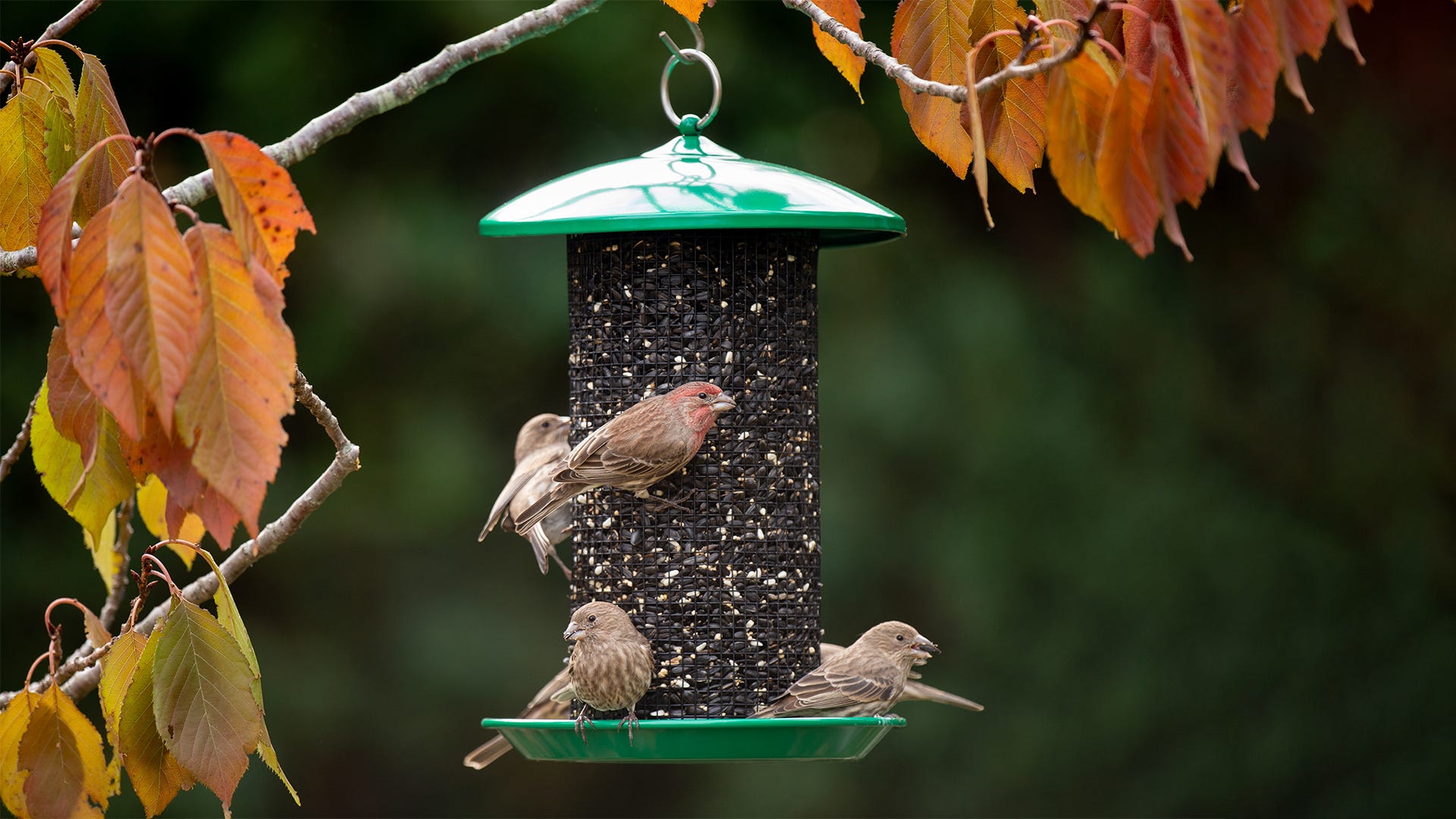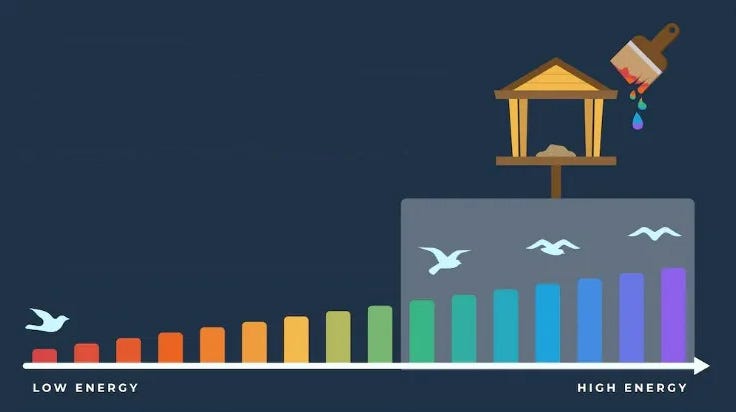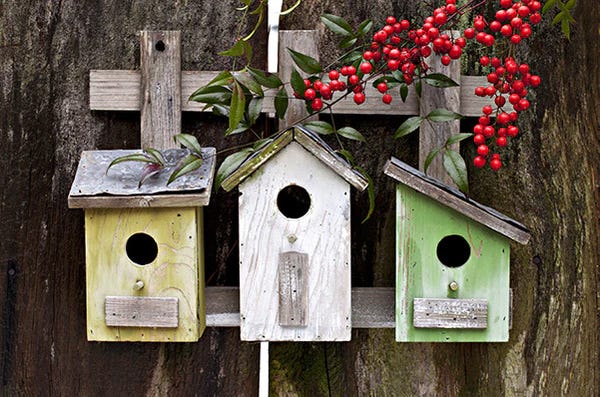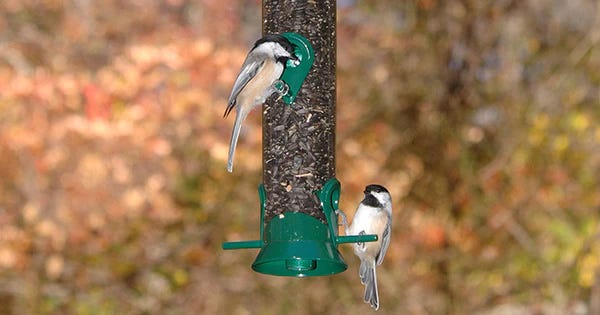
Backyard birdwatchers dedicate a lot of time and resources into attracting a diversity of birds to their yards. While we go to great lengths to offer food and water, there comes a point when you wonder if there is something else you can do to attract more birds.
One question that makes for a lively discussion is that of color. Does one color attract more birds than another?

Do some
bird feeder colors
attract more birds?
Most birds seem to prefer colors in the high energy wavelengths, like green, blue and purple, though there are exceptions.
- Starlings prefer blue
- Gold finches prefer green
- Siskins prefer red
- Robins prefer black
Other factors in attracting wild birds.
- Feeder Location
- Food Type
- Feeder Style
How Much Can Birds Really See?
Most people have color vision, as the human eye has three types of photoreceptors. In the animal kingdom, many animals—including dogs—only have two photoreceptors. That results in many animals seeing fewer colors on the visible spectrum.
Birds have the same three photoreceptors as humans, but in greater numbers. This is why researchers believe they can see more variations and intensities of colors than we do. However, unlike humans, birds have a fourth photoreceptor that allows them to see ultraviolet light. With this in mind, there may be some truth to color playing a role in attracting birds to backyard bird houses and bird feeders.

Picking a Color for Your Bird Feeder or Bird House
One key factor when choosing a color for your bird house or bird feeder is the location. The safety of birds should always be considered as predators will always be a threat. Colors that help a bird house or bird feeder blend into the environment are best in that regard. Gray, dull green, tan, or brown, are colors that make bird houses or bird feeders less visible to predators because they blend in best with natural surroundings. Avoid metallic or fluorescent colors as they tend to be so bright, they offer no cover from predators.
Which Colors Attract More Birds?
From a marketing standpoint, many bird houses are sold in colors that coordinate with certain bird species. Red and pink tend to be the most common feeder colors for hummingbirds. Bird houses and bird feeders for goldfinches are often yellow, while blue is a common color for bluebird products. Because of their love for oranges, oriole bird houses and bird feeders are often colored orange.
However, a few studies have pointed to science-based findings about the role color plays in bird houses and bird feeders:
- The Royal Society for the Protection of Birds found that blue was the most popular color in the summer months. Surprisingly, their study found the color silver was popular all year long. They determined that goldfinches preferred green. In another surprise, they found siskins would flock to red feeders offering peanuts.
- The Morrell Lab at the University of Hull in the United Kingdom determined silver and green to be the most popular colors regardless of the season. Their study also concluded that robins were attracted to black and starlings to blue.
- In an effort that won them the 2017 GlaxoSmithKline United Kingdom's Young Scientist Award, two students discovered blue was the clear winner with green coming in second. These two young, future scientists believe that birds prefer colors in the high energy wavelengths—blue, purple, and green. Red and yellow, low energy wavelength colors, they believed, were less popular because they are warning colors in nature.

Despite these studies and continuing research, there is no general unanimity. For backyard birdwatchers, experts advise them to pay more attention to factors outside of color, like food, feeder location and feeder style.
While color may play some role in attracting birds to your backyard bird houses and bird feeders, there is still much to learn about how influential color may be. Just as the birds may be attracted to colorful houses and feeders, we benefit from a splash of color as we look out our windows to watch our backyard visitors.







